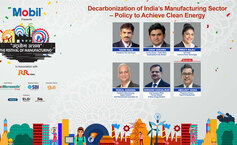
Two-tier ERP solutions
A lot of times, we see companies deploying a single ERP solution for both headquarters and regional offices in multiple cities. However, with this practice, companies must pay a large sum to the vendor, and the implementation is another challenge that needs to be handled by the organisation because regional offices have their own requirements, and with a single ERP solution, they are unable to function at their full potential.
This has resulted in ERP vendors coming up with a two-tier ERP solution where organisations can leverage their investment in the existing ERP solution at level 1. At the same time, their subdivisions can operate a level-2 ERP solution, which is provided by the same vendor.
In this form of multi-level ERP solution, large companies will be able to use their core ERP solutions for handling financial tasks and other mission-critical processes. In contrast, the smaller business units of the company will be able to use ERP solutions that cater to their specific needs.
More sustainable operations
With the government urging industries to make their operations more sustainable, it is time for ERP solutions to join the bandwagon and integrate sustainability into their work. More than 80 per cent of executives from all around the globe agree that they need to make better efforts to protect the environment.
Some companies are claiming to achieve carbon neutrality by a specific year or even a specific date. However, even right now, many are uncertain as to how to achieve this while conducting their operations without any issues.
With environment, social, and governance (ESG) software, organisations can quickly find out how much damage they are causing from their operations, but even ESG requires a helping hand from ERP to get this done. Let us show you how.
For example, if a customer is looking to buy a new motorcycle, they have the freedom to customise it as much as possible. From changing the leather of the seat to making sure that the colour of the fuel tank matches with that of their car or the type of tyre they want for a smoother ride experience, once a customer is done customising his bike, the ERP solution can provide him with the carbon footprint of the bike based on the customisation along with its manufacturing cost.
Now imagine this: if the same page that shows the carbon footprint has a button that says, "Click To Make Your Bike More Environment Friendly," With just one click, the system will automatically recommend the changes that customers can inculcate while including all the environmental guidelines. With ERP, this data can be given to the customer in real-time, making a great impact on their decision and bringing a much positive change to the brand values in their minds.
Collaborative ERP
Most companies want their software programmes to be easily accessible to all team members. For example, if someone from the sales team is working on a purchase order and requires a colleague's input on that purchase, they do not have to switch from the ERP solution on which they are currently working and open some other programme to take the input from their team member.
The ERP solution must become a one-stop solution for business needs. This will save time and allow employees from different teams to interact quickly with one another. We have seen the partnership between SAP and Microsoft to provide shareable links to live ERP data that can work directly on the Microsoft Team channel.
In the near future, these two companies are looking to work more closely to form a better collaboration of their programmes so that one day you can send realtime data from the SAP ERP solution in the Microsoft Teams channel, and everyone who is a member of it can see the changes taking place in the data live from their chat box.
AI-powered ERP
As businesses seek more tailored solutions for their unique challenges, the demand for industry-specific ERP systems is on the rise. For instance, a healthcare ERP system may focus on patient data management and regulatory compliance, while a manufacturing ERP might prioritise inventory management and production scheduling. This inclination towards customisation ensures that businesses are not just implementing a one-size-fits-all solution but are investing in systems that align closely with their operational requirements, industry standards, and long-term strategic goals. As a result, industry-specific ERPs are becoming a vital tool for companies looking to gain a competitive edge in their respective markets.
Conclusion
The transition phase in the ERP industry is taking place right now. With companies realising the speed and agility they require to stay relevant in the competitive market, they are soon going to move from their current software to a cloud-based ERP solution.
The COVID-19 pandemic is making every business work remotely. It is expected to be seen that in the coming years, the latest changes in ERP solutions will be inclined towards making them more accessible for remote working.
If you haven't switched the ERP solution yet, then now is the time for you to be part of the change with Embee India, the best SAP ERP solution provider.
Source
1. Business Wire
2. Forbes



























